There’s a sublime stretch of coast between the Overberg and main Garden Route mostly bypassed by travellers. We unlock the gate and drive down a limestone track into this magical world of shipwrecks, fishing hamlets and hidden estuaries.
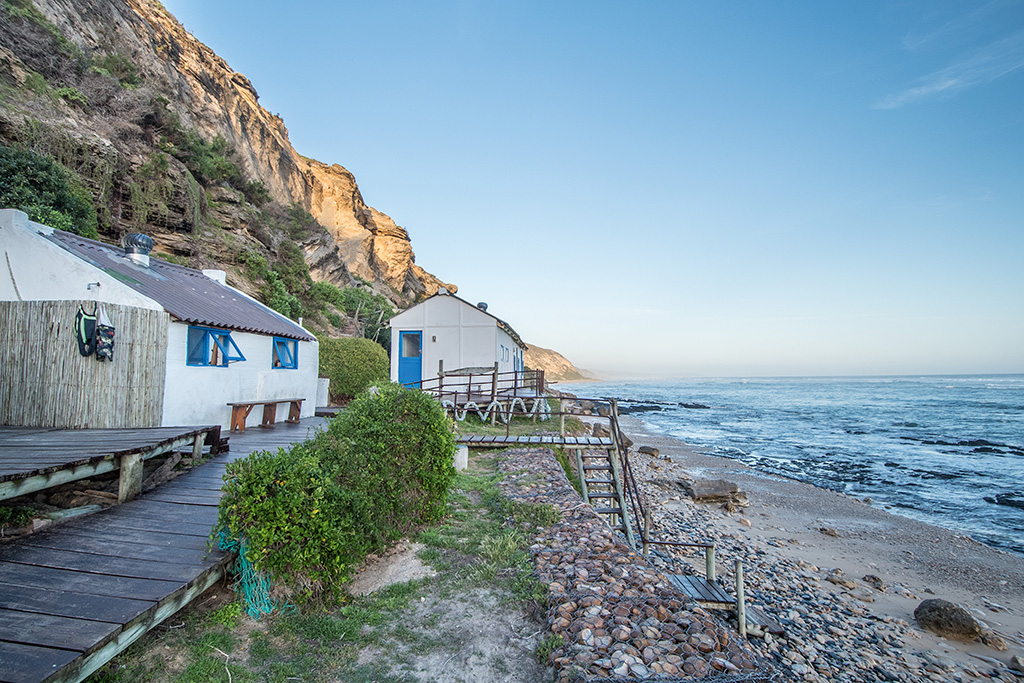
Koensrust Beach Shack is a slice of paradise on a farm near Vermaaklikheid – for you and seven friends or maybe just one special companion. Image credit: Justin Fox
A place of turquoise seas patrolled by southern rights and great whites, a coast of lichen-stained rocks and ghostly sea mist, of private nature reserves you’ve never heard of and dark, meandering rivers. There’s the fragrance of buchu wafting on the Southeaster, proteas coating the slopes and the thundering of surf. There are limestone cliffs and rock pools filled with life, where Homo sapiens carved a niche over the past 100 000 years, leaving evidence in rock art, shell middens and visvywer fish traps. This is the wild and beguiling Southern Cape.
Getaway has often explored the nation’s extremity, from Hermanus to De Hoop Nature Reserve. But there’s another corner of the Deep South, between the Breede River and Mossel Bay, that gets neglected. My partner Tracey Younghusband and I slipped the city’s shackles and took two weeks in October to explore this coast. We set off from Cape Town in our sporty gold Renault Duster, cooler bags, surfboard and beach toys in the back, taking the N2 east then, after Swellendam, the R324 down to the Breede River mouth.
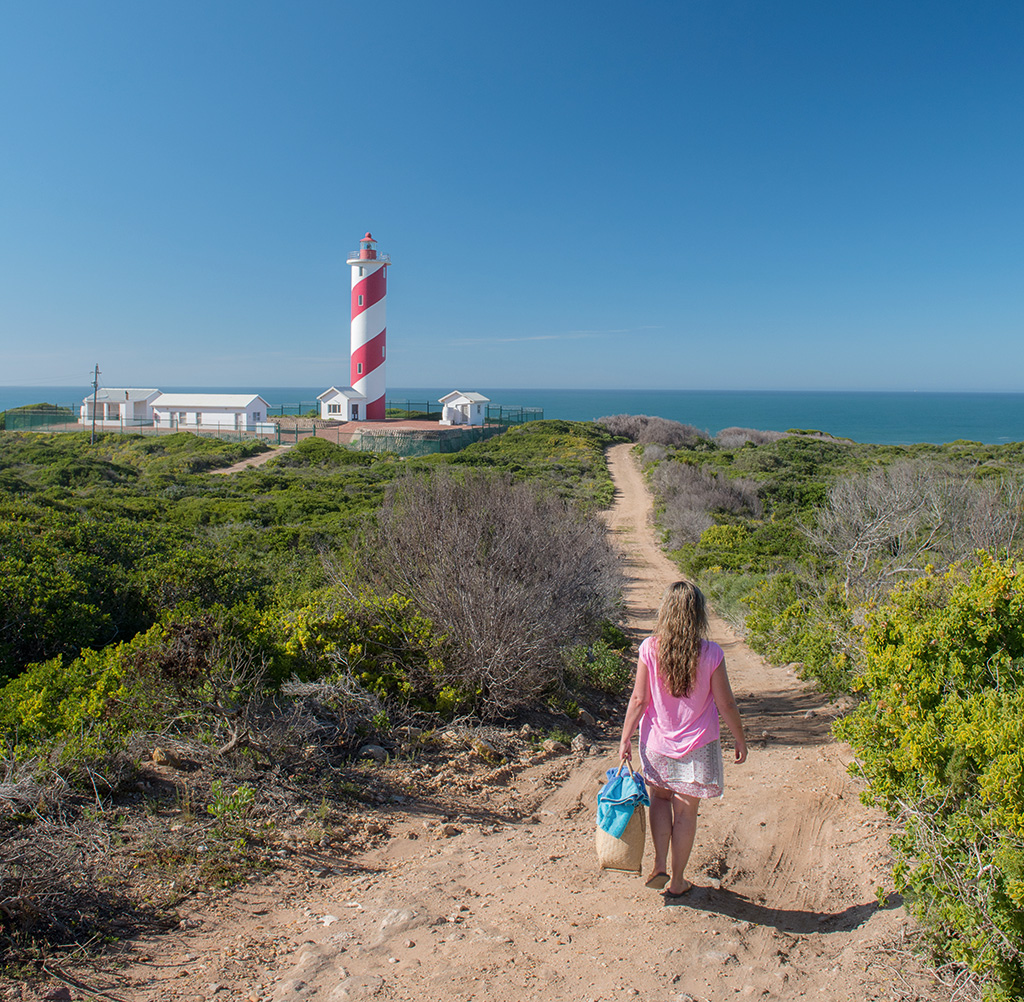
Looking gorgeous in its candy stripes, Ystervarkpunt Lighthouse lies within Gourikwa Nature Reserve. Replacing the former aluminium structure (built in 1964), this is South Africa’s newest lighthouse, completed in 2006. Image credit: Justin Fox
‘Blue chicken,’ called Tracey, pointing at the sky. (She’s not much of a twitcher and calls all birds chickens). ‘Blue crane,’ I said. ‘Yes, a blue chicken,’ she said. Our first overnight stop was the Breede River Lodge in Witsand, a popular haunt on the east bank of the river. This Cape Dutch style resort of thatched cottages has its own harbour and a restaurant with fabulous sundowner deck. From there, you can watch the play of evening light on the river, the coming and going of boats, birds and seals.
Next door stands the Barry Church, build by this renowned family in 1849 when Port Beaufort was a flourishing harbour for Barry-owned ships plying the route between Cape Town and Malgas on the Breede River. We explored the graveyard, packed with the Barry clan, and came upon a monument (and propeller) to the most famous of local ships, the SS Kadie.
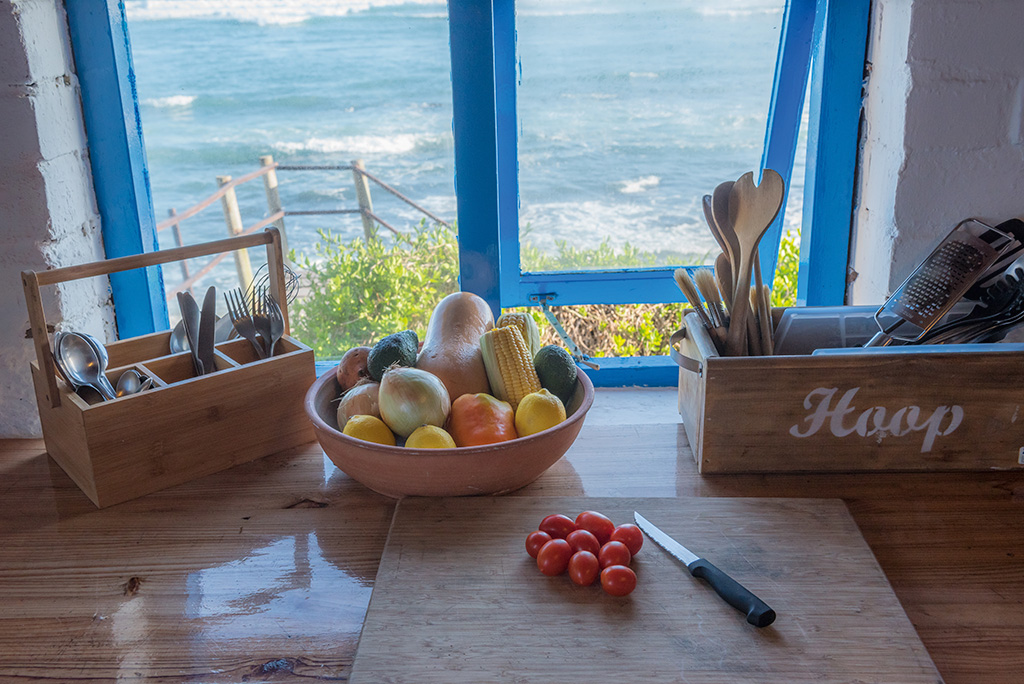
Preparing for the evening braai at Koensrust Beach Shack. Image credit: Justin Fox
During the 19th-century, Barry vessels travelled as far as 40 kilometres upstream, however crossing the bar at Witsand was dangerous, particularly during onshore gales, and many ships were lost. To address this problem, the Barrys had the 158-ton steam-sailor Kadie built. From her hold goods were offloaded all along the Breede and transported by wagon to Swellendam and surrounding farms. Wool, sheep, grain and passengers made the return voyage to Cape Town. After six years of successfully negotiating the river mouth, Captain Semmes grew too confident and ran the Kadie aground during a gale in 1865. A piece of her boiler is still visible at low tide among the rocks.
The hamlet of Vermaaklikheid lies half an hour’s drive north-east of Witsand. This rural community, strung loosely along the Duiwenhoks River, holds its secrets close. Driving its country lanes, you come upon tucked-away cottages with thatched roofs, squat end-chimneys, vine pergolas and fig trees. Many roads are dead ends, gated or have prominent no-trespassing signs. Privacy is greatly valued here. Vermaaklikheid has no real centre, only one small shop, a bakery, seasonal restaurant and precious little passing traffic.
We’d booked a few nights at the remarkable, quirky House of Eels, set 100 metres back from the river. Built by local draughtsman Jackson Andrew, the house has a unique relationship with the natural environment. There’s a sunken garden, a turret bedroom and the design is inspired by the flora, making clever use of reeds, bluegum logs, local stone and discarded ironwork.
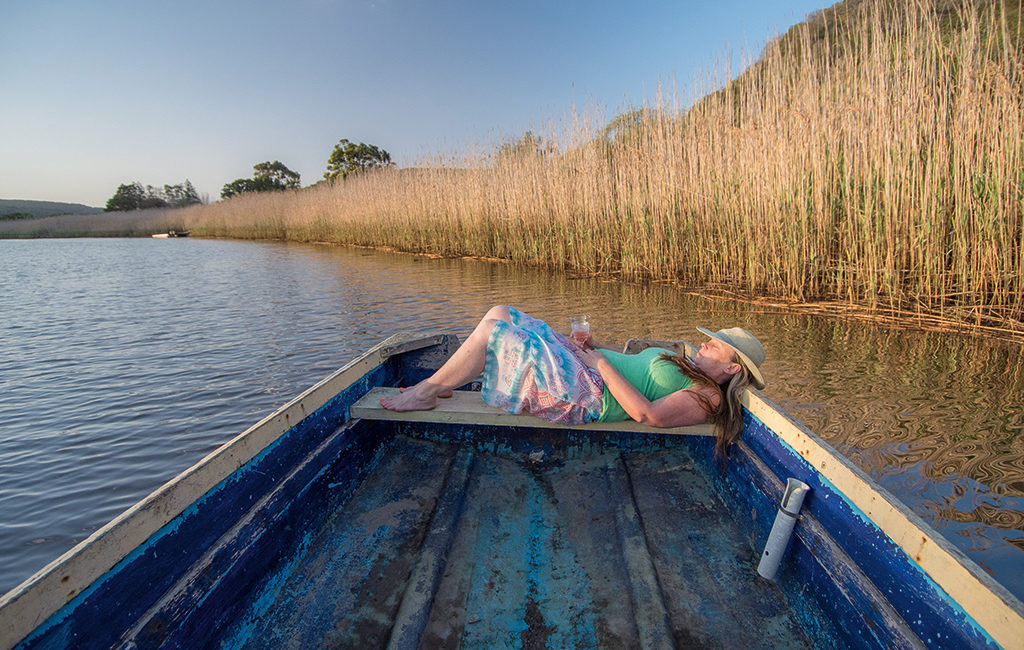
Tracey doing her strenuous evening workout on the Duiwenhoks River. Image credit: Justin Fox
At night we sat around the braai pit watching the flit of bats, listening to the sizzle of meat and the sounds of the night. ‘Did you hear that,’ whispered Tracey, ‘a fiery-necked chicken.’ ‘Fiery-necked nightjar,’ I said. We explored the river by canoe and rowing boat, and swam in its tannin-rich water. At every bend we could make out houses hidden among the trees. There were rope swings over the river, private jetties and boats tucked among the reeds. The banks were alive with waterfowl, from kingfishers and darters to spoonbills and herons. It was a Huckleberry Finn world, snug in the enveloping curls of the Duiwenhoks.
Near the river mouth, we came to a locked gate, barbed wire and keep-out signs. Beyond lay Puntjie, a legendary hamlet of kapstyl houses (traditional dwellings with A-frame thatch extending right to the ground) on a bluff – sea to one side, estuary on the other. No way in. So we ventured down a river track, along a marshy stretch of the Duiwenhoks, and came to an elegant Cape Dutch manor house right on the water. The lane was gated. Keep out.
The lime-white road east was long, straight and lovely. Its only traffic was tortoises bent on being squashed, so it was dodgems all the way to Jongensfontein. My surfboard was whining in the back and I was craving a wave myself. But the swell was huge, breaking all over the place in a crazy funk at both Jongens and Stilbaai, so we retreated to the tourist-information centre (which doubles as a museum) to find out what was what in the area. And a good thing we did so too, because there we met Annerise Wolmarans, a gold-mine of local knowledge.

The 18th-century farm Kleinfontein boasts one of the region’s grand old, Cape Dutch homesteads and lies near the mouth of the Duiwenhoks, just a few kilometres downstream from Vermaaklikheid. Image credit: Justin Fox
Housed in Palinggat homestead (built in 1809 and the oldest building in town), the museum has an excellent exhibition of the findings at nearby Blombos Cave. Annerise briefly led us through a few hundred thousand years of Stilbaai history. She explained how excavations at Blombos have yielded vital information on the cultural evolution of humans. A replica of the famous chunk of engraved ochre – the Rosetta Stone of this coast – lay in a cabinet. The scratches on this tiny artefact are believed to be the earliest known drawing done by a human.
‘I also feed the eels,’ said Annerise. ‘Would you like to see?’ ‘Eels!?’ ‘Yes, we have a fountain out back where longfin eels live. Apparently, they’ve been there for around 125 years. Our eels can reach up to 1,6 metres and migrate from here downriver, out to sea and all the way to Madagascar to spawn when they’re about 25 years old.’
Annerise led us round the side of the building to a pond. ‘We’ve had to electrify the fence. Otters got in a while back and killed our biggest eels – ripped the heads off for their nutritious brains.’ Annerise knelt down and held a piece of chicken liver at the mouth of a rock overhang. She stroked the water, calling to the eels. I could hardly believe what I was seeing. Just then, a dark creature with pale blue eyes poked its head out of its underwater cave and nibbled at her fingers. ‘Chicken!’ said Tracey. ‘Who would have thought it?
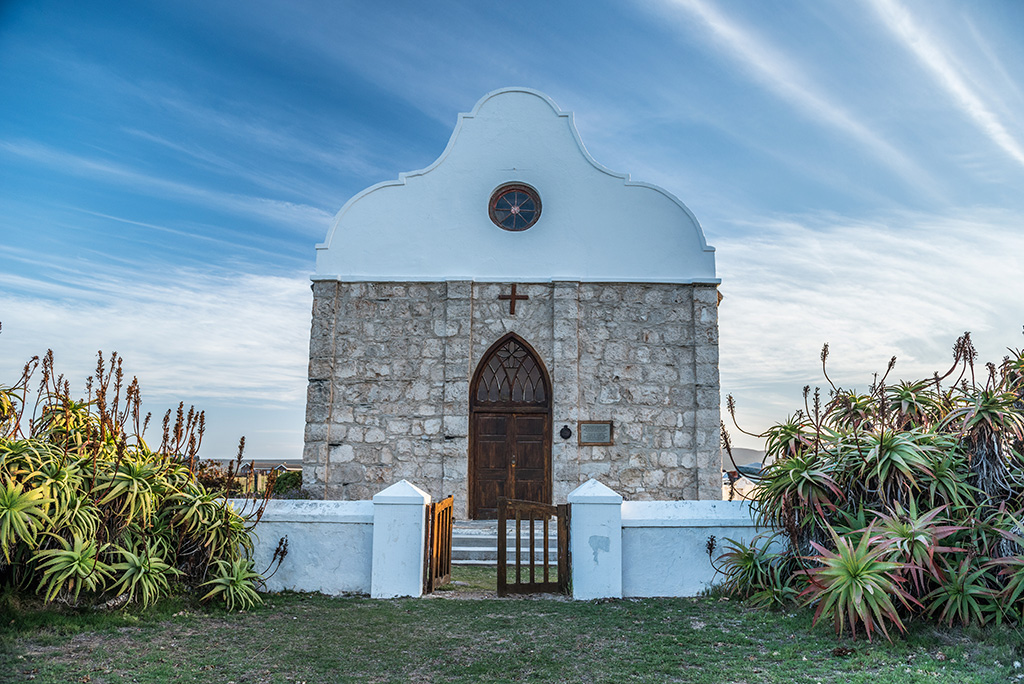
Built in 1849, the Barry Church in Witsand is a memorial to that intrepid and entrepreneurial Breede Valley family. Image credit: Justin Fox
The next day I was once again hungry for surf. The Stilbaai wave at Skulpies had sorted itself out, cleaned up its lip and was firing. Greybeards were suiting up and waxing their sticks in the parking lot. I did the same and followed one savant onto a frothing ledge, timed the jump and paddled like the blazes to beat the next set. The water was warm and green, the waves perfect crisp hollows of joy. It was a pleasant hour mostly spent paddling to stay in the right spot and not succumb to the rip.
Our accommodation that night was on the Goukou River, six kilometres upstream from Stilbaai. Koningsfontein is a thatched farmstead overlooking a graceful sweep of river. The house is big and comfortable with antique furniture, leather sofas and large windows with fine valley views.
We took the Koningsfontein motorboat and went adventuring. As with the Duiwenhoks, each Goukou bend revealed holiday homes, cottages and small nature reserves that couldn’t be seen or accessed from public roads. It was another sequestered world far removed from the Cape we thought we knew. Locals wearing beanies and puffer jackets puttered past in their motorboats, toasting us with tall-glass sundowners.
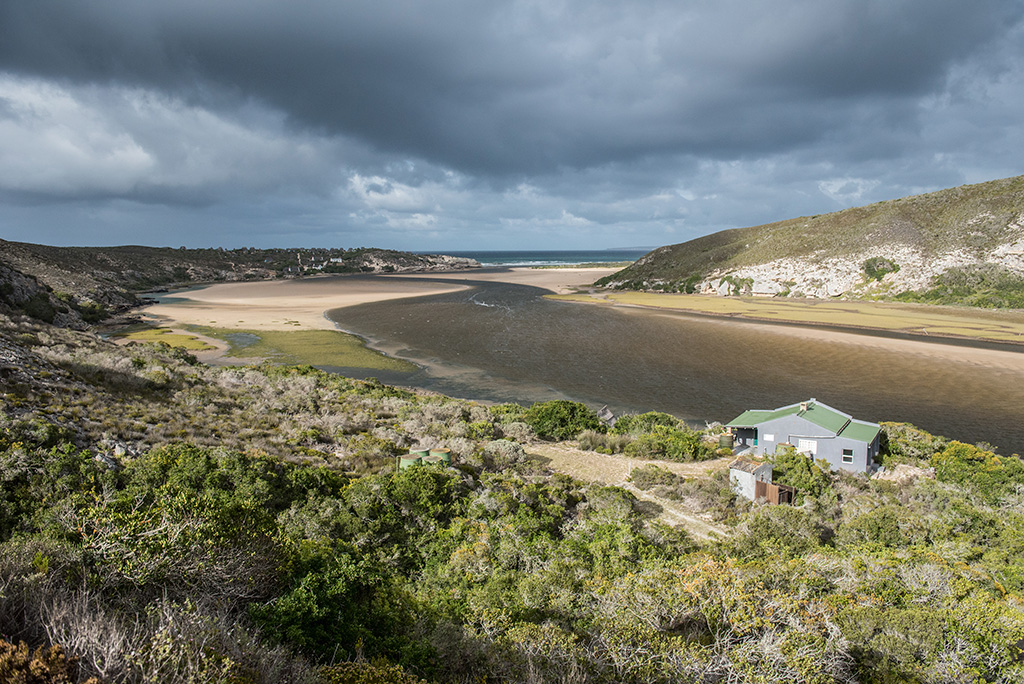
On a headland at the mouth of the Duiwenhoks River you’ll find the legendary hamlet of Puntjie, comprising kapstyl houses with thatch roofs extending right to the ground. Image credit: Justin Fox
Then on we pressed, ever eastward. Gourikwa Nature Reserve lies on a wild and rocky stretch of shoreline. It started life in 1994 as Reins Reserve, closed for some time, but was bought, renovated and reopened by two Joburg businessmen a couple of years ago.
Our villa suite was set in the fynbos hills above the main lodge. There were sweeping vistas of the valley and ocean beyond, where a southern right waved its fluke at us. Eland, grey rhebok and Cape mountain zebra grazed among the suites. A scenic drive followed a fynbos loop dotted with plant-identification signs (Gourikwa is protea heaven, with the likes of lance-leaf, stink-leaf and Stilbaai pincushion). On one drive, we came upon three Cape fox puppies playing in the road. No doubt their mother would have had a fit if she’d seen them out and about in daylight. But it was our luck and delight.
That evening, we braaied on our deck watched by a quartet of zebras and a Cape eagle owl, who oversaw proceedings from the chimney top and was soon joined by her fluff-ball baby. Lying in bed later, we listened to an occasional, quizzical ‘Hu-huuu?’ from the pair. I’d be hard-pressed to name a better lullaby.

Tracey doing her strenuous afternoon workout at House of Eels in Vermaaklikheid; a local acolyte carries his stick to the baptismal font in Stilbaai; Built in 1849, the Barry Church in Witsand is a memorial to that intrepid and entrepreneurial Breede Valley family. Image credit: Justin Fox
Striking east once more, we cruised the feral shore to Gouritsmond – as sleepy as a midweek, out-of-season dorp can be – then followed the Gourits River upstream, crossing a bridge flanked by a muddy bank drilled with hundreds of pied-starling nests. A spotted eagle owl sat in one of the nesting holes, looking like a cat who’d scored the cream, as dinner flitted by in banquet-sized numbers.
Vleesbaai is a gated community that keeps itself to itself. We talked our way past the boom, but found that many streets were ‘residents only’. Even the road to the beach was barred by a boom. On the shore, there were signs forbidding most things, including surfing. Not feeling entirely welcome, we trundled down the peninsula to Fransmanshoek. This magnificent conservancy has good walking trails, braai spots and benches on the cliff edge to watch the waves detonating below.
An early-summer gale was on the brew, so we found a cottage for the night in Boggomsbaai, hunkering down for Scrabble and red-hued plonk until it blew itself out. As the bright lights of Mossel Bay were now loitering on the horizon, this would be the easternmost extent of our trek. It was time to bend for home.
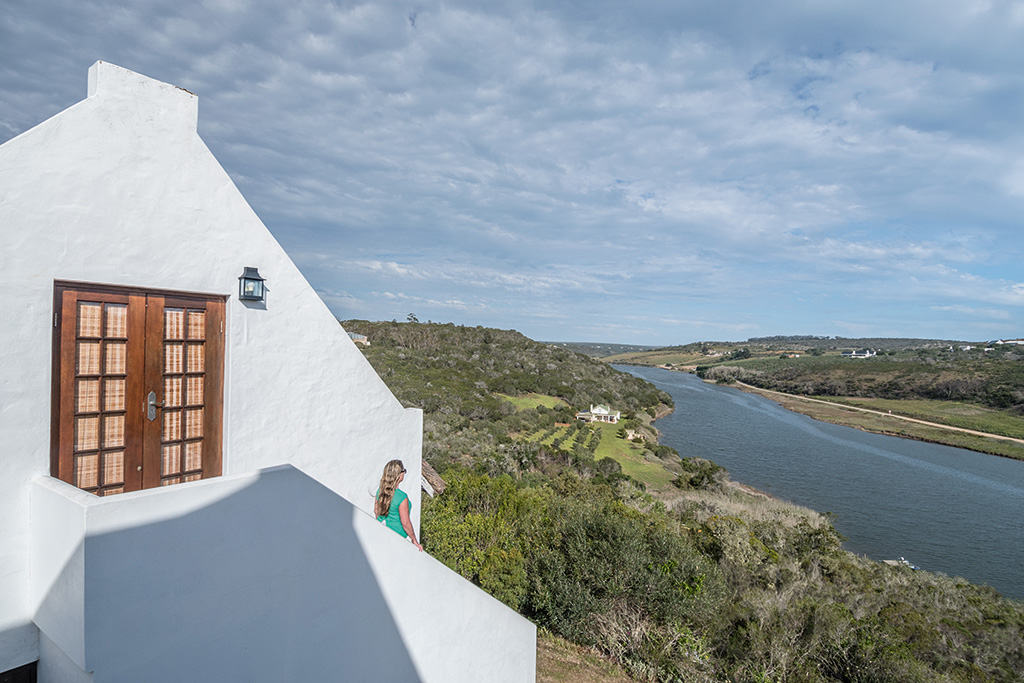
Koningsfontein. Image credit: Justin Fox
However there was one last hideaway we wanted to try: a beach camp on the farm Koensrust, back near Puntjie. It’s reached along a track that becomes a path, then a steep flight of steps down to the base of a cliff. The Beach Shack has a dramatic situation on a ledge above a cove that’s awash at high tide. So much so, that it’s like being in a boat at sea. Simple white interiors, driftwood art, sea-egg chains: it’s New England meets Greece meets old Cape. This is Robinson Crusoe charm in a setting that leaves you spellbound.
Koensrust farm is pristine (alien vegetation is removed annually), has good walking trails and a river camp for when the coastal weather gets blustery. But we couldn’t tear ourselves away from the Shack and its shore – the stiff, vertical walk back to the car was an added incentive to stay put.
We explored the coast at low tide, peering into rock pools impossibly rich in sea life, and interrupted the snoozing of seals among the boulders. The beach was beautiful; ours were its only footprints. Braais on the deck were conducted to the roar of spring-tide waves against the gabions, star reflections jiving in the shore break.
Sleep was long and deep, serenaded by the booming of the outer reef. In the mornings, we’d wake to another high tide having brought its own set of flotsam, wrack and new discoveries. The whole setup, its rhythms and its peace, was quite magical.
Eventually, it was time to drag ourselves away, take the gravel road north and join the trail of traffic bound for the Mother Ship. As we turned onto the N2, a raptor swooped across our path. ‘Jackal buzzard!’ cried Tracey. ‘Actually, that one does look a bit like a chicken,’ I said.
‘Nonsense,’ she said.
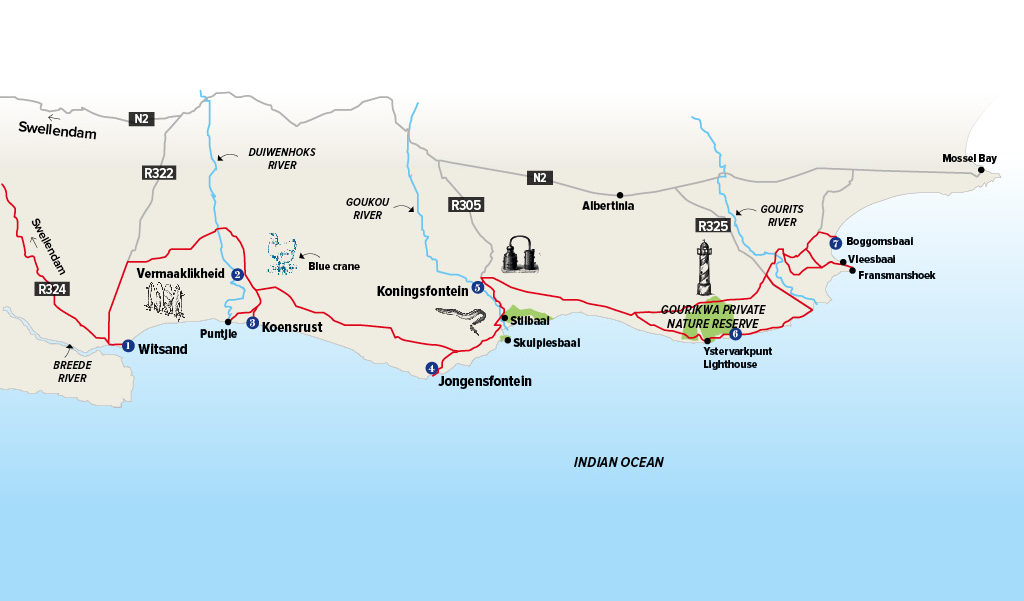
Plan Your Trip
1. Breede River Lodge in Witsand is a large, popular resort near the mouth of the river, with an activities and water-sport centre. *From R521 for a Fisherman Cottage (sleeps two). 028-537-1631, breederiverlodge.co.za
2. House of Eels in Vermaaklikheid is a charming, quirky home on a large plot. It has a striking, landscaped garden and the property stretches down to the river where there’s a rowing boat and canoes for guests. The outdoor fire-pit is the perfect spot for braais. *From R4 250 (sleeps 10). 021-790-0972, perfecthideaways.co.za. For other local options, see Getaway’s Final Cut on Vermaaklikheid, September, 2016.
3. Koensrust Sea Farm has various accommodation options, including a tented river camp, kapstyl house and yard cottage. We chose the Beach Shack, comprising four separate buildings – bedroom, kitchen, bathroom and main ‘lodge’ (with lounge/dining and three bedrooms) all rented as one self-catering unit. Guests have access to the farm’s walks, beaches and river boma. *From R1 650 per night for the Shack (sleeps 8); others from R830. 061-273-1906, koensrust.co.za
4. Little Rock in Jongensfontein is a comfortable, modern guest house with stunning sea views. The couch in the dining room, with its jaw-dropping panorama, is a place to lose an afternoon. There are braai facilities and braai packs on offer. From R750 pp sharing, B&B. 082-876-2139, littlerockguesthouse.com. *There are more affordable camping and self-catering options at Jongensfontein Strandoord. Campsites start from R265 and huts from R1 210 (sleep five). 028-713-7850
5. Koningsfontein is a self-catering, thatched farmhouse with charming with antique furniture, kelims, leather sofas and four-poster beds. It has fishing rods, two kayaks and a motor boat. Both braai areas (front or back, depending on wind) have good views. *From R5 450 (sleeps 12 ) 021-790-0972, perfecthideaways.co.za. If you want to stay in Stilbaai itself, try the many options on travelground.com.
6. Gourikwa is a 2 500ha nature reserve with five kilometres of pristine coastline, some game, good birding and stunning fynbos. The fishing is rewarding too, and there are walking trails, a swimming pool and putt-putt. From R375 pp for self-catering 087-702-9126, gourikwa.co.za
7. Sandpiper in Boggomsbaai comprises nine local homes for self-catering. We chose Mosselkraker, a comfortable, open-plan cottage with a large hearth. *From R488 pp sharing (sleeps four). All guests have the use of the Sandpiper Sport and Leisure Centre (tennis and squash courts, spa, music evenings). Enquire about other houses. 044-699-1204, sandpiper.co.za
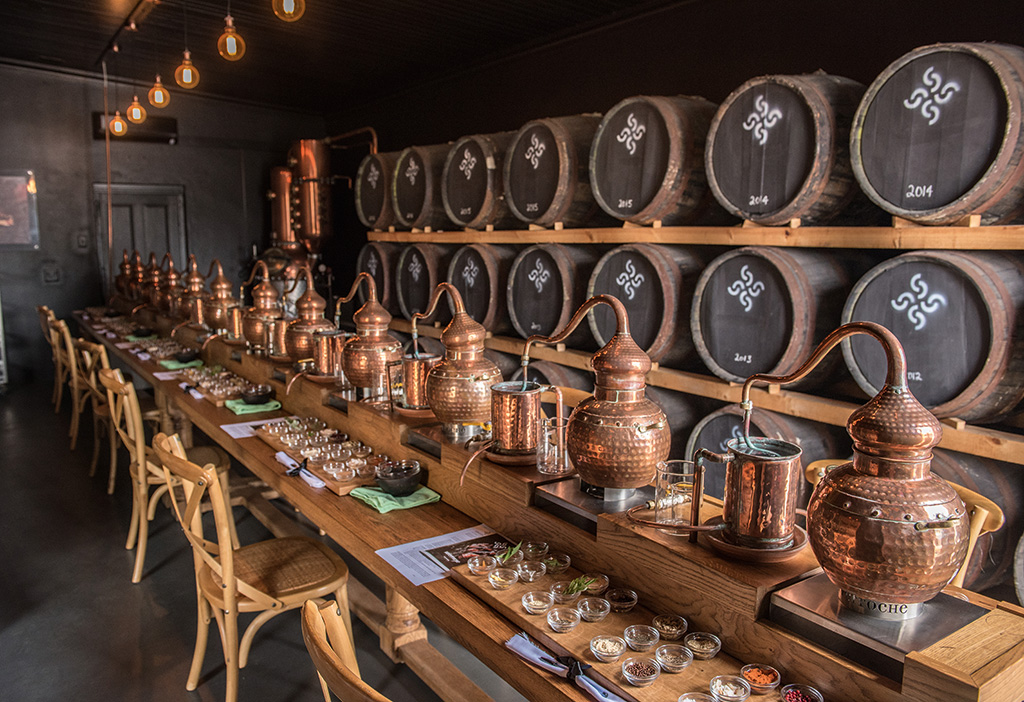
Inverroche. Image credit: Justin Fox
Eat Here/Buy Supplies
Witsand
Nellas se Winkel is a traditional country store that sells a bit of everything (vetkoek, jewellery, fishing tackle, you name it). For pub food, eat at Pili Pili Restaurant in the Breede River Lodge (028-537-1018). It has a lovely deck for sundowners. For basic, hearty fare, try The Anchorage (028-537-1330) right on the beach or River Breeze (082-381-9330) on the Breede.
Vermaaklikheid area
Buy your main supplies at the Spar in Heidelberg, Riversdale or Stilbaai. The bakery in Vermaaklikheid recently survived a flood and is open again. Oulywe deli should be up and running again soon. 082-689-9660
Stilbaai/Jongensfontein
Drie Pikkewyne (028-755-8110) serves simple fare of fish, pizzas and burgers in Jongens, or drive to nearby Stilbaai for options including The Press Room Café for Mediterranean style cuisine (028-754-2568) and fresh, healthy meals at Paradiso Country Kitchen (082-864-0711).
Vleesbaai/Boggomsbaai
There are no established restaurants in the area, so try one of the many eateries (and get supplies) in Mossel Bay, about 25km away.

House of Eels. Image credit: justin Fox
Do This
In Witsand, hire canoes and SUPs at Breede River Lodge (kitesurfing lessons in season). breederiverlodge.co.za
Fishing in the region’s rivers, estuaries and ocean for elf, sand steenbras, spotted grunter, Cape stumpnose, galjoen, garrick, musselcracker and mullet is very popular. Get permits at your local post office.
Surfing in Jongensfontein (right-hand reef break) and Stilbaai (right-hand point break) is excellent, but can be gnarly. Jogens works in smaller conditions, but the point at Stilbaai needs a solid swell to fire properly. There are tamer options off the harbour wall. Vleesbaai is a legendary spot but only fires about 10 times a year and needs a huge swell.
Look out for ancient fish traps at Rooikoppe in Stilbaai, and elsewhere along the coast. These stone walls, used to trap fish on the outgoing tide, are a legacy of the Khoisan inhabitants and are thought to be up to 3 000 years old.
Visit the Stilbaai museum (town history, ethnohistory, rock art, archaeology) at the tourist-info centre and watch the feeding of the eels at 11am from Monday to Saturday. 028-754-2602

Stilbaai eels. Image credit: Justin Fox
Stilbaai has a fynbos park, Tuin-op-die-Brak, with more than 240 plant species (028-754-1181), and three nature reserves with walking trails : Pauline Bohnen, Geelkrans and Skulpiesbaai. Enquire at tourist info.
Do a gin tasting (R90) or gin tour (R100) at the stylish Inverroche distillery, just outside Stilbaai on the R305, and sample the unique, fynbos-infused products, including gin-flavoured ice-cream. Or have a picnic in its elegant garden. Monday to Saturday 10am to 4pm. 028-754-2442
Enjoy a cheese pairing – with wine, chocolate etc at Kasselshoop Cheese Farm (R110 per pairing) on the R305 between Stilbaai and the N2. Weekdays 10am to 3pm. kasselshoop.co.za
The walks (and braai spots) on the Fransmanshoek peninsula near Vleesbaai are excellent. Or test your sand-driving skills on the Vleesbaai 4×4 Dune Route on the farm Misgunst. R400 a vehicle. 044-699-1107. 4x4ineden.co.za
You may also like
Related Posts
Gabrielle Jacobs forsakes the Breede Valley’s winelands for some Cape nature at Vrolijkheid Nature Reserve,15km...
read more